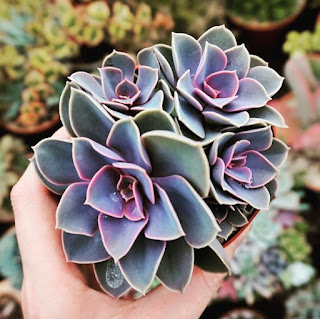Cultivating Blooms: A Guide to Helping Your Cactus Flower Indoors
Cacti are renowned for their resilience and adaptability, making them popular choices for indoor plants. While many cacti are admired for their unique and sculptural forms, some species also produce beautiful flowers. Cultivating flowering cacti indoors requires a bit of attention to their specific needs, but the rewards are well worth the effort. In this guide, we'll explore the key factors that contribute to a cactus blooming indoors and offer tips on how to help your cactus reach its full flowering potential.
Selecting the Right Cactus:
Choosing the right cactus species is crucial for indoor cultivation success. Some popular flowering cacti include the Easter Cactus (Hatiora gaertneri), Christmas Cactus (Schlumbergera spp.), and the Queen of the Night (Epiphyllum oxypetalum). Ensure that the cactus species you select is well-suited to indoor conditions and matches your level of gardening expertise.
Proper Light Exposure:
Adequate light is one of the most critical factors influencing cactus flowering. Most cacti require bright, indirect light for several hours each day. Place your cactus near a south or west-facing window where it can receive ample sunlight. If natural light is insufficient, consider supplementing with artificial grow lights designed for cacti and succulents.
Optimal Temperature and Humidity:
Cacti generally thrive in warm and dry conditions, mimicking their native desert environments. Maintain a temperature range between 70-100°F (21-38°C) during the day and slightly cooler temperatures at night. While cacti are well-suited to low humidity, providing a slightly elevated humidity level can be beneficial during the flowering period. Placing a tray of water near the cactus or using a humidifier can help achieve this.
Well-Draining Soil Mix:
Cacti prefer well-draining soil to prevent waterlogged roots, which can lead to root rot. Use a specialized cactus or succulent mix, or amend regular potting soil with sand or perlite to enhance drainage. Repot your cactus every 2-3 years to refresh the soil and provide additional nutrients.
Watering Wisely:
Overwatering is a common mistake when caring for cacti. Allow the soil to dry out between watering sessions, and then water thoroughly. During the flowering period, it's essential to maintain a slightly more consistent moisture level to support flower development. Reduce watering in the dormant season when the cactus is not actively growing or flowering.
Fertilizing for Blooms:
Cacti benefit from regular feeding during the growing season (spring and summer). Use a balanced, water-soluble fertilizer formulated for cacti or dilute a general-purpose fertilizer to half-strength. Begin fertilizing as new growth appears, and continue until late summer. Reduce or stop fertilizing during the dormant period.
Pruning and Maintenance:
Pruning is generally not necessary for cacti, but removing dead or decaying segments can improve air circulation and encourage new growth. Additionally, removing spent flowers can redirect the plant's energy toward future blooms.
Be Patient and Observant:
Cacti are known for their slow growth, and flowering may not occur immediately. Be patient and observe your plant regularly. Note any changes in growth patterns, flower bud development, or signs of stress. Adjust your care routine accordingly.
Cultivating flowering cacti indoors can be a rewarding and visually stunning experience. By providing the right conditions, including proper lighting, temperature, soil, and care, you can encourage your cactus to bloom and enjoy its captivating flowers year after year. Remember that each cactus species may have specific requirements, so tailor your care routine to meet the needs of your particular plant. With a bit of patience and attention, your indoor cactus can become a vibrant and blooming centerpiece in your home.


.png)






